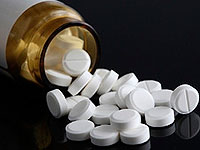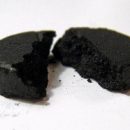The pain is needed by a person as a signal of unfavorable in the body, but it does not mean that it needs to be tolerated. Anesthetic drugs help to cope with pain. How to choose them correctly? Than pills from pain differ from each other?
Content
- When to take painkillers?
- What kind of pain medicine to choose?
- Analgin, aspirin and k0
- It is important!
 Acute and chronic, pulling, driving, pulsating, dock — pain is different, but in any case, its appearance testifies to disadvantaged. The pain is conceived by nature as a protective reaction arising in response to the threat of damage or the destruction of the body tissues. «Quiet» or «loudly» It testifies to injuries and pathological processes, forces to seek the cause of problems and eliminate them in the shortest possible time.
Acute and chronic, pulling, driving, pulsating, dock — pain is different, but in any case, its appearance testifies to disadvantaged. The pain is conceived by nature as a protective reaction arising in response to the threat of damage or the destruction of the body tissues. «Quiet» or «loudly» It testifies to injuries and pathological processes, forces to seek the cause of problems and eliminate them in the shortest possible time.
The pain needs a person, but it does not mean that she needs to be tolerated. Pain people are able to break the usual lifestyle, knock out the rut for a long time and even make disabled. Anesthetic drugs help to cope with pain. How to choose them correctly? And than pills from pain differ from each other?
When to take painkillers?
It would seem that the answer is obvious — When pain appears, but not every pain needs treating pills.
It is not necessary at the first pain symptoms to flee into a pharmacy for anesthetic medicine, in some cases the body itself is able to cope with the unpleasant sensations. For example, the headache of the voltage is safely disappeared after a short rest and walk in the fresh air. In response to pain signals in the body, their own painkillers are produced, which restore the lost balance. If the pain does not pass for a long time, it means that there are missing resources in the body, and then he needs help from the outside in the form of a tablet.
Menstrual pains, pains emanating from the urinary tract, biliary system, are eliminated by antispasmodics, for example «But-shpoy», «Papaverin», «DROTAVERIN», «Spasmol». These pains are caused by the spasm of the smooth muscles of the internal organs, so the elimination of spasms eliminates the pain themselves.
From pain caused by intestinal colic will help «Espumizan» Or ordinary activated carbon, children and at all helps dill water.
In some states, the reception of analgesics can play a cruel joke. For example, under appendicitis, cholecystitis, ulcerative diseases of the stomach, intestinal obstruction, the reception of painkillers is categorically contraindicated. Removing pain, medicine «lubricates» The clinical picture of the disease makes it difficult to diagnose, and the loss of precious time can cost life.
In case of pain in the chest and myocardial infarction, the delay in the admission of a vasodilator, in particular nitroglycerin, can lead to death as a result of an increase in the heart muscle damage zone. The absence of timely adequate assistance with a headache caused by a brain stroke is threatened with a lenter of large brain sites and deep disabilities.
Conclusion: Before taking an anesthetic drug, you need to find out the reason for the occurrence of pain. It is forbidden to take analgesics with severe abdominal pain, in the chest, with headache, accompanied by nausea, dizziness and vomiting. In these cases, emergency medical care is needed.What kind of pain medicine to choose?
What kind of medicine is suitable better if the tooth is hurts, head or leg? All painkillers can be divided into two large groups: narcotic and nonarcotic.
 Narcotic analgesics are used only in the threat of painful shock, exclusively under the supervision of the doctor and in its intended purpose. The anesthetic effect of drugs is associated with their influence on the brain and blockade of areas of the nervous tissue, perceiving all sensations. Drugs such as «Morphine», «Alfentanil», «Buprenorphin», «Bujofanol», Sold by a special recipe bonded by several seals, and their turnover is strictly controlled by the state. Only non-tarcotic drugs can be purchased in the pharmacy network.
Narcotic analgesics are used only in the threat of painful shock, exclusively under the supervision of the doctor and in its intended purpose. The anesthetic effect of drugs is associated with their influence on the brain and blockade of areas of the nervous tissue, perceiving all sensations. Drugs such as «Morphine», «Alfentanil», «Buprenorphin», «Bujofanol», Sold by a special recipe bonded by several seals, and their turnover is strictly controlled by the state. Only non-tarcotic drugs can be purchased in the pharmacy network.
A group of non-nucleic analgesics is heterogeneous, it includes both one-component drugs and combined means. It is believed that combined analgesics are most effective in the fight against severe pain. The composition of combined painkillers can additionally include various components, most often it is codeine, caffeine and phenobarbital. Caffeine enhances the action of an anesthetic component, the codeine itself has a property to remove pain, and the phenobarbital has a calming effect and helps to struggle with pain «Stress». Examples of combined painkillers are «Pentalgin» and «Tempalgin», They relieve head and dental pain, help pain in the ears.
Pains caused by spasms, such as headache in weather-sensitivity or premenstrual syndrome, is successfully removed by an analgesic and antispasmodics combination, for example, «Spasguan», «Spasmalgon», «Barultin» or «Novigan».
Analgin, aspirin and to0
The pharmaceutical industry produces many single-component drugs from pain, they apply to them, above all, analgin and all non-steroidal anti-inflammatory funds.
The use of Analgin in the medical practice of WHO is assessed ambiguous. It is believed that he negatively affects the kidneys, the liver, blood formation, so it often does not follow. In Western countries, Analgin is prohibited, we can meet it in the pharmacy network and is popular by low cost and high efficiency.
One of the most sought-after drugs from a group of non-steroidal anti-inflammatory funds is aspirin, it is shown in painful syndrome associated with inflammation. Aspirin, or acetylsalicylic acid, affects the synthesis of inflammation mediators, reduces swelling, eliminates blood stagnation, reduces the temperature and has an anesthetic effect. Aspirin is part of many combined drugs from pain, in particular «Citra», «Askaphena», «Asphena», «Aizhin», Applied when headaches, migraine, Malgia, Neuralgia.
Aspirin abuse is fraught with the exacerbation of inflammatory diseases of the gastrointestinal tract, due to the risk of developing the syndrome, it is not recommended to give adolescents and children. To reduce the irritating effect of the drug on the gastric mucosa, it must be taken after eating and drink milk. In addition, dosage forms in the form of effervescent tablets are less aggressive in relation to the digestive system.
Paracetamol — Widely used drug with anesthetic, antipyretic and weak anti-inflammatory effect. Its use is substantiated with feverish states accompanied by pain syndrome, for example, with flu or ORVI. The undoubted plus of paracetamol: it practically does not affect the state of the gastrointestinal mucosa. Minus: it acts weaker than other analgesics and in high doses has a toxic effect on the liver. Paracetamol is applicable with weak and moderate pain, for example, with pain in the joints, muscles, with neuralgia, head and toothache, with painful menstruation.
Ibuprofen acts stronger than paracetamol and at the same time also rarely causes adverse reactions from the gastrointestinal tract. It is effective in rheumatoid arthritis, deforming arthrosis, during menstrual pains and, most importantly, it can be given even to children. Due to the possible kidney damage ibuprofen, it is recommended to use episodically.
Nimesulid — The drug from a group of non-steroidal anti-inflammatory agents, which has a pronounced and long (up to 12 hours) an anesthetic effect in the absence of a negative effect on the gastric mucosa. Minus: the drug is not well understood and is not recommended to children, it can cause drowsiness and therefore requires caution when driving a car and using complex equipment. Nimesulide relieves well in joints, muscles, helps with algodismenorye.
It is important!
Anesthetic drugs are symptomatic means. They do not treat the disease and do not eliminate the cause of pain as such, they only dulk discomfort. Therefore, with an acute unbearable pain or weak, but long-term pain needs to receive a doctor's advice.
Analgesics have a side effect on the body, so when pain, it is necessary to try to cope with it with a minimal dose of the drug, that is, to take half a pill and only then, in the absence of effect, the second half.
Doctors recommend using painkillers no more than 2–3 times a week. If the pain does not live quietly, it is necessary to undergo a survey and take care of the underlying disease.









